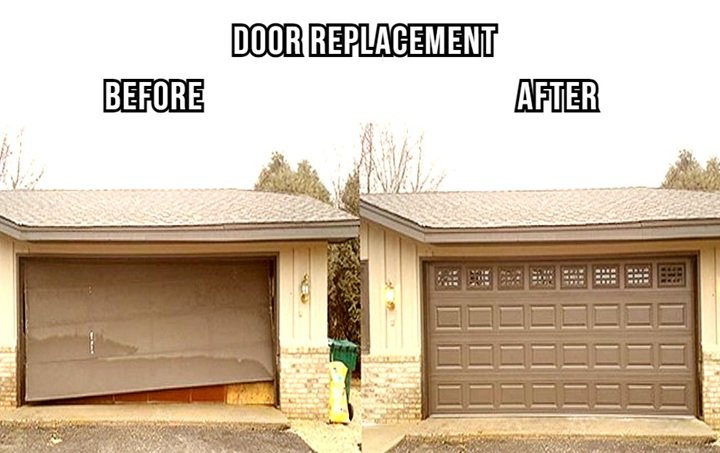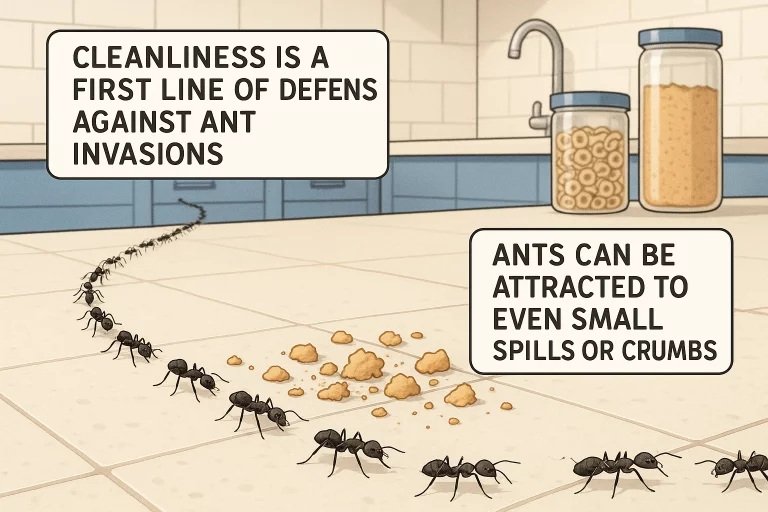
If you’re anything like me, you can probably spend hours staring at an aquarium.
The lights, the flora, and the fish themselves offer an array of aesthetic wonders for you to enjoy.
Visually Appealing
A feature aquarium takes this to a whole new level, by using the form of the aquarium, the decorations within, and the exotic fish inhabiting it to paint a scene unlike anything else.
Feature aquariums are generally reserved for experienced aquarists, though with enough research and careful planning, anyone can create their dream exhibit.
Find inspiration for the finished product
Whether you’re looking to recreate a natural biome or a window into something resembling the sunken Queen Anne’s Revenge, inspiration for which elements to include to perfect your finished product exists somewhere on the internet.
Scour every platform you can to find all the inspiration that you can.
I’ve recently finished a huge build for a feature I’ve installed between my living room and kitchen and the majority of the work that went into it was the “mood board” I had created to help keep my creative juices flowing.
By finding inspiration online, I was able to meticulously plan for every aspect of my new tank, which leads me to my next point…
Plan carefully
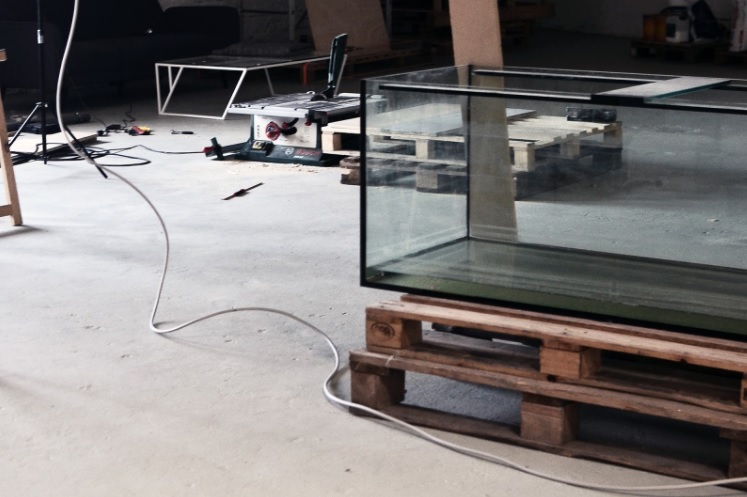
Finding inspiration is super important, but more important than inspiration is the plan. Sure, that to-scale treasure chest may look great on your mood board, but if you haven’t planned for how it affects the rest of your tank, you may be shooting yourself in the foot by allocating a large portion of your budget to it.
Where to start
I recommend that you start with your background, middle-ground, and foreground.
Once you have an idea of what kind of features and plants you want to use to give your tank depth, you can start to make decisions about other important areas, such as what kind of fish you want to include in your feature, whether you’re going to opt for live or artificial plants, or what size tank you should opt for.
Composition and the rule of thirds
If you’ve ever taken an “intro to photography” class, you likely know all about the rule of thirds.
The rule of thirds says that you should break any image or scene into 9 equal frames. By dissecting the complete image with two horizontal lines and two vertical lines, you create a “grid” from which you can best compose a scene.
Focal POints
The human eye is naturally drawn to the point where the lines intersect (the four corners of the center frame) or “focal points”. The human eye does not naturally move to the center frame, and therefore, the center should be an area used to lessen the noticeability of dead space.
By using the rule of thirds and placing key elements of your aquarium on any of the four intersecting points, you manipulate the way that the viewer perceives the scene and enhance the overall “wow” factor.
The tank itself
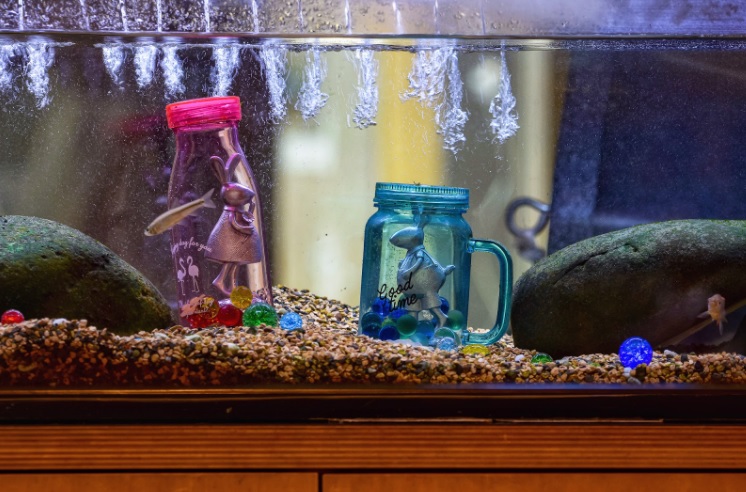
Remember we spoke about planning? Well, this is where your planning should come into full effect.
Location
Choose an area where you will get maximum enjoyment from your tank.
A living room or home office are the two most commonly used places in the home (besides the kitchen) and are two of my favorite locations for feature tanks.
Accessibility
No matter where you decide to place your tank, make sure that you won’t need to move it – a filled tank can weigh near a ton, depending on size!
You’ll also want to make sure that you’ve chosen an area where you have room around the tank to clean, as well as work on the tank itself.
Shape
Next, choose the size and shape of your tank.
It’s incredibly important that you opt for a tank that will offer your fish the right environment to thrive.
If you opt for less, you’ll be dooming your aquatic pets before you’ve even introduced them to their new habitat.
Though size does matter, a larger tank will need a heater that is sufficient enough for its size. For example, if you’re planning on getting a 55-gallon tank you will need to find a 55-gallon aquarium heater that will heat the whole tank and keep its inhabitants healthy.
The right kind of fish
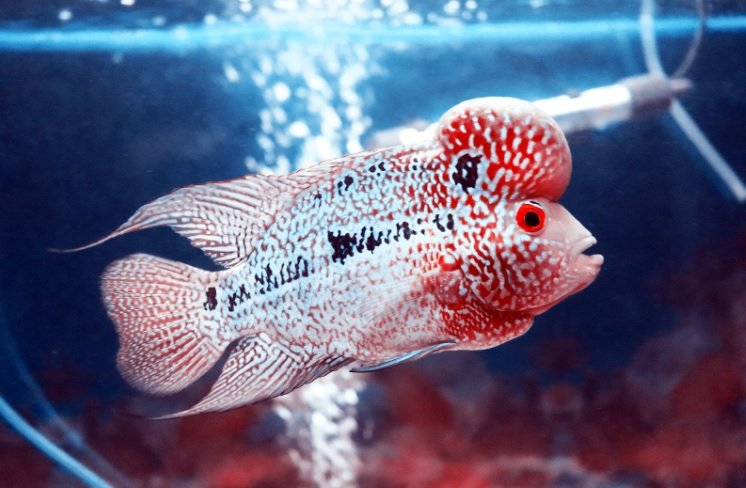
The kind of fish that you choose will greatly depend on the size of the tank that you buy, the scene that you want to set, and the composition of the community of fish you want to end up with.
While you are spoiled for choice, a few of my favorite fish include:
- Rubber Lipped Pleco
- Male Endlers
- Electric Blue Hap
- African Leaf Fish
- Discus
- True Black Mollies
- Pearl Gourami
- Betta
- Flowerhorn Cichlid
These are, of course, just a few of my favorite exhibit fish and are not necessarily fish that should share a tank.
Conditions
It is incredibly important to make sure that the size of the tank, the flora, and the other fish in the tank are suited to the kind of fish that you ultimately choose to include in your aquarium.
It can be tempting to go for the “best looking” fish or features, but you should keep in mind that you are creating a micro-biome.
Unfortunately, practicality must take precedence at all times!
General rules to keep in mind
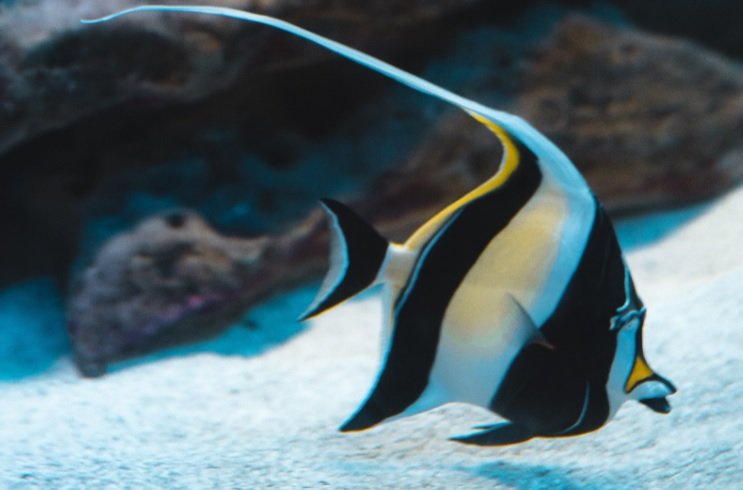
We’ve touched on location, but something that you should account for is the day-to-day use of the space that you place your tank within.
If, for example, you have an HVAC unit near to where you intend on placing your tank, you may have to reconsider.
Water Temperature
Water temperature will affect your tank and is something that aquarists spend a lot of time perfecting – a harsh external temperature shift, as HVAC units cause, will adversely affect your tank health.
Also, ensure that the floor underneath your tank can withstand the weight of the final product (for a long time). Aquariums can weigh a ton (literally) and not all structures were built to sustain that.
Maintenance
Plan for upkeep. Each tank, fish, and water type have a unique list of requirements to maintain optimal health.
It is wise to have a full, well-thought-out maintenance plan on hand well before you begin your build.
Enjoy the process
Finally, be sure to enjoy the process.
Larger feature aquariums are often once-in-a-lifetime projects that few aquarists ever get the pleasure of enjoying.
Be sure to take the time to appreciate every step along the way.
While it can become daunting, frustrating, and even tiring, the entire journey is one that you will remember fondly if you allow yourself to enjoy the challenge!
Share Your Creation!
I look forward to seeing pictures of your feature aquarium in the comments! If you’ve built your own feature aquarium, let us know your top tip.
Finally, if you found this helpful, share it with your friends on social media!


